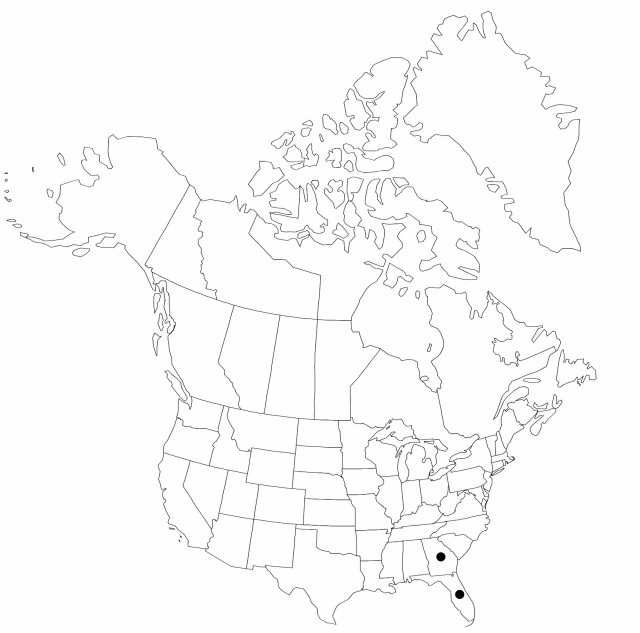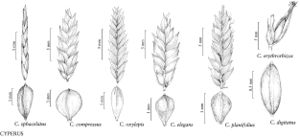Cyperus planifolius
Actes Soc. Hist. Nat. Paris 1: 106. 1792.
Herb, perennial, cespitose, rhizomatous. Culms trigonous, 25–50 (–80) cm × 0.8–2.6 mm, glabrous. Leaves flat to V-shaped, 30–80 cm × 3–10 mm. Inflorescences: spikes ovoid, 1.5–3 × 1.5–3 cm; rays 4–7, 1–10 cm; 2d order rays occasionally present, 0.5–2 cm, rays often not elongate, inflorescence then capitate, 2–5 cm diam.; bracts 4–8, horizontal to ascending at 30°, flat to V-shaped, longest 6–35 cm × (1.5–) 4–8 mm; rachilla persistent, wings 0.4–0.6 mm wide. Spikelets (10–) 20–60, reddish-brown, flattened elliptic in cross-section, linear-lanceoloid, 6–22 cm × (1–) 2–3 (–4) mm; floral scales deciduous, 6–16, medially greenish, laterally reddish-brown to brown, medially 3–5-ribbed, laterally 3–5-ribbed, ovatelanceolate to ± orbiculate, 2.5–3 × 1.4–1.8 mm, apex acute to obtuse and mucronulate. Flowers: anthers 0.7–1.8 mm; styles (0.3–) 1.2–2.8 cm; stigmas (1–) 2–3 mm. Achenes brownish to black, stipitate or sessile, ellipsoid to obovoid or oblong, 1.3–2 × 0.75–1 (–1.1) mm, apex obtuse, apiculate or not, surfaces coarsely punctate.
Phenology: Fruiting throughout the year.
Habitat: Coral sand beaches, coastal rock outcrops
Elevation: 0–10 m
Distribution

Fla., Ga., Mexico, West Indies, Central America (Belize), Central America (Honduras)
Discussion
Selected References
None.
Lower Taxa
"shortened" is not a number.
